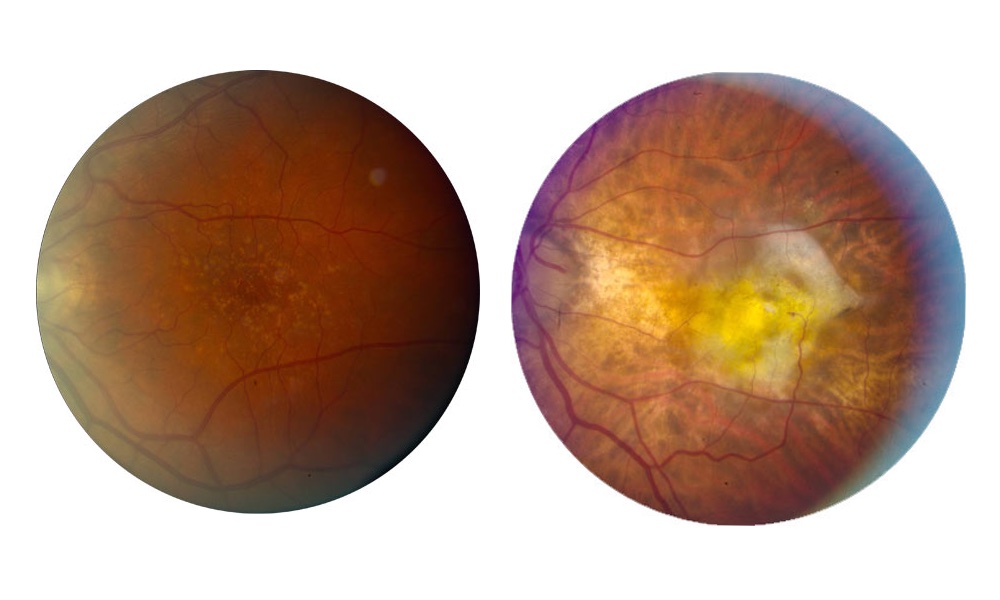Age-related macular degeneration (AMD) is the leading cause of legal blindness in countries with long life expectancies. In 2001, the Age-Related Eye Diseases Study (AREDS) found that taking oral supplements containing high doses of the antioxidant vitamins C, E and beta carotene plus zinc could cut the risk of progression in those people at high risk for advanced AMD.
The follow-up AREDS2 study in 2013 and 2014 showed that replacing beta carotene with lutein/zeaxanthin made the supplements safer and more effective. This revised formula has been the standard of care used worldwide for many years. Neither the AREDS nor the AREDS2 study found additional benefits to taking the supplements once participants developed late-stage AMD, however.
In a new analysis of the AREDS and AREDS 2 data, researchers at the National Institutes of Health found that AREDS2 supplements with lutein and lutein/zeaxanthin, sold under brand names like PreserVision, can slow progression of the late-stage, dry form of AMD.As the disease progresses, patients can develop leaky blood vessels, known as “wet” AMD, or lose regions of rods and cones, called ‘dry' AMD.
No direct evidence exists, unfortunately, that starting AREDS2 supplements early, before the condition develops, can slow AMD progression, said Keenan, of the National Eye Institute at the National Institutes of Health.
AREDS2 supplements can decrease the risk of progression to late-stage AMD when a person already has late-stage AMD in one eye but not in the other, or when a person has intermediate-stage AMD in at least one eye. “In situations such as those with early-stage AMD or a family history of AMD, we have no evidence for potential benefit from these supplements,” he said.
There is evidence, however, that lifestyle measures, particularly eating a healthy diet and avoiding smoking, can slow disease progression in those with early-stage AMD.
The macula is the area in the retina that contains light-sensitive cells called rods and cones. In the early and intermediate stages of AMD, the retina develops drusen, small yellow deposits of fatty proteins. As the disease progresses, patients can develop leaky blood vessels, known as “wet” AMD, or lose regions of rods and cones, called ‘dry' AMD. Geographic atrophy slowly expands during AMD progression, resulting in a gradual loss of central vision.The supplements slowed the rate of expansion towards the fovea by about 55 percent over about three years among most of those who developed atrophy far from the fovea.
For the current study, the researchers reviewed the original retinal scans of the 318 participants (392 eyes) in the AREDS trial and the 891 participants (1,210 eyes) in the AREDS2 trial who developed dry macular degeneration. They calculated the position and expansion rate of the regions of participants' geographic atrophy.
Those who developed atrophy in the fovea, the pit in the center of the macula responsible for central vision, saw no benefit from taking the supplements. But for most who developed atrophy far from the fovea, the supplements slowed the rate of expansion towards the fovea by about 55 percent over about three years.There is evidence that lifestyle measures, particularly eating a healthy diet and avoiding smoking, can slow disease progression in those with early-stage AMD.
The AREDS and AREDS2 studies did not account for a phenomenon seen in dry AMD called foveal sparing. Most patients with dry AMD first develop geographic atrophy far from the fovea. They only lose their central vision when their geographic atrophy expands into the foveal region.
The researchers are planning a randomized clinical trial to test this finding directly. They hope to enroll participants with geographic atrophy that does not involve the fovea and assign them to take either a supplement or placebo, and measure the rate of progression to the fovea.
The study is published in the journal Ophthalmology.





